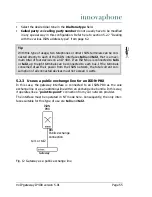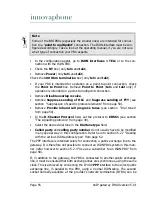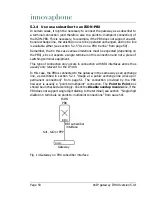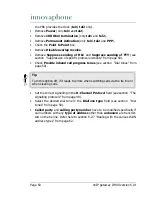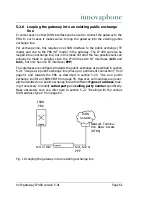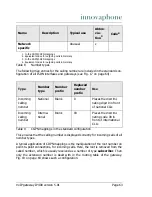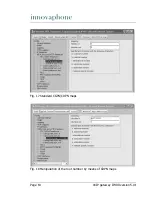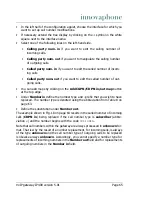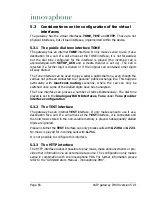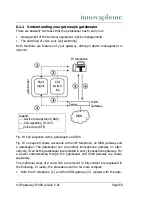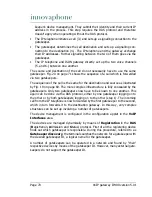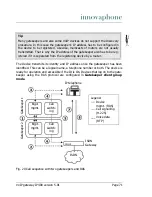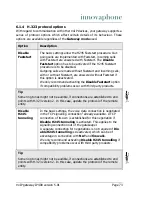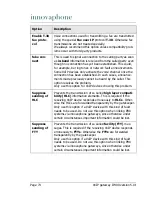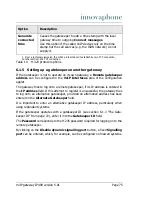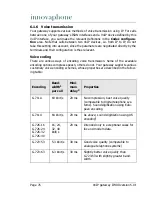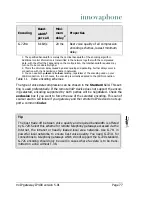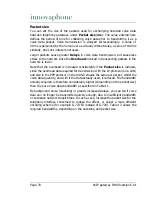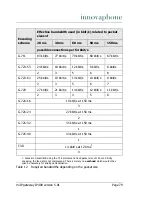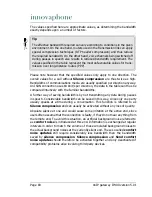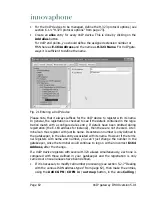
VoIP gateway IP400 version 5.01
Page 67
6
Configuration of VoIP interfaces
In the same way as ISDN interfaces lead the world of classical telephony, “VoIP
interfaces” are channels to the world of
Voice over IP
. If your gateway needs to
communicate with other devices via VoIP, access to these devices has to be con-
figured as a VoIP interface.
These can be different types of equipment:
• Other innovaphone gateways,
• VoIP terminal equipment, for example IP telephones such as the innova-
phone IP 200,
• VoIP terminal adapters such as the innovaphone IP 21 to connect analogue
terminals or a DECT base station,
• Third-party VoIP gateways, as a gateway to telephone switches or into the
SS7 network, for example,
• Further gatekeepers for call control,
• VoIP PC programs such as innovaphone Softwarephone.
Each VoIP interface defines access to a group of devices, which are all treated
similarly. This allows, for example, all IP telephones at one location to be config-
ured via a single VoIP interface. Since your gateway allows the definition of 12
different groups, it is able to communicate in all with several hundred VoIP
devices.
The configuration is performed in the
VoIP Interfaces
area of the configuration
applet.
6.1
General considerations on the configuration of the
VoIP interfaces
The telephony infrastructure in the VoIP environment always consists of three dif-
ferent modules:
• VoIP end points
These are devices that implement the end points of telephone calls. For
example an IP telephone such as the innovaphone IP 200 or VoIP software
such as innovaphone Softwarephone. Such end points are usually assigned to
just a single user.
• VoIP Gateways
These are gateways to other telephony networks or technologies. These can
be gateways to the ISDN network or to the analogue telephone network, but



